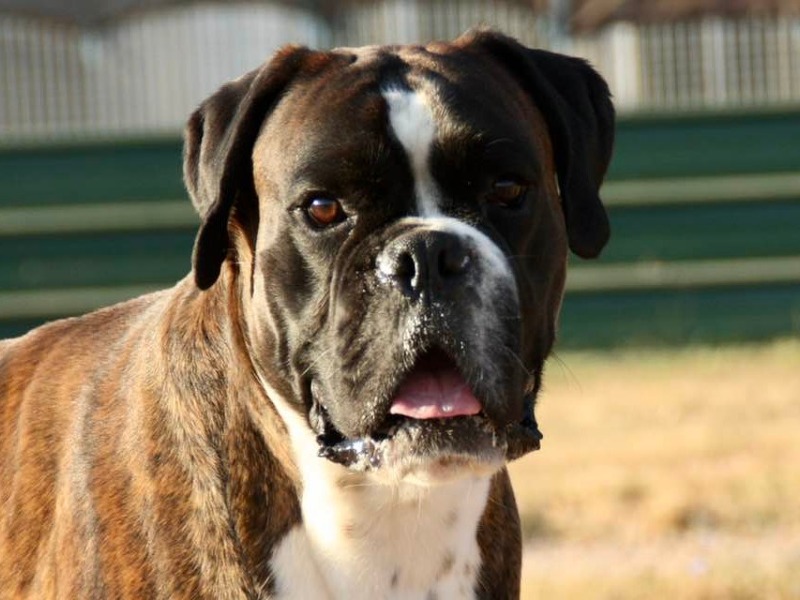Beagle
Welcome to our page dedicated to the breed of dog beagle!
Here, you will find all the useful information about beagle. This descriptive profile will allow you to discover the aspects of this breed. You can notably consult information about the average price, monthly and annual upkeep expenses, their health, name ideas, as well as their official recognition by competent authorities.
Explore this page to discover everything you need to know.
Overall description of the breed
The Beagle is a breed of hunting dog that originated in England. Its history dates back to antiquity, when similar dogs were used to hunt rabbits and hares. The Beagle we know today was developed in England in the 19th century by breeders with a passion for hunting.
The Beagle's ancestors are probably hounds from the Middle Ages in England, used for hunting in packs. The term "Beagle" may derive from the French word "beegueule", meaning "big gullet", in reference to the powerful sound the dogs made when hunting. Today, the Beagle is a popular breed in most western countries, particularly in the United States and Canada, where nearly 100,000 dogs are registered every year.
Beagles are medium-sized dogs that are compact and well proportioned. They have an expressive head with large brown or hazel eyes and long, floppy ears. Their coat is short, dense and weather-resistant, enabling them to hunt in all weathers. Beagles come in a variety of coat colours, the most common being tricolour (black, white and brown) and bicolour (white and brown).
Beagles are renowned for their friendly, sociable and jovial nature. They are energetic, inquisitive dogs with an excellent sense of smell, making them formidable hunters. They have a gentle personality and generally enjoy the company of humans and other animals. Because of their friendly nature, they are also very popular as companion and family dogs.
In terms of weight and size, the Beagle is a medium-sized dog. The average weight is between 9 and 11 kg (20 to 25 lb) for both males and females. Its height at the withers is generally around 33 to 41 cm (13 to 16 inches).
The Beagle is a popular dog breed throughout the world, and is recognised by many international dog organisations. The British Kennel Club established the first Beagle breed standard in 1890. Official recognition by the FCI took place on 26 April 1955, when the Beagle was included in Group 6 (Hounds, Bloodhounds and related breeds) and the date of the last update of the official standard in force was published on 13 October 2010.
Beagles are still widely used as hunting dogs, especially for rabbits and hares, but they are also very popular as companion dogs because of their playful, friendly and adaptable character. Its small size, charming looks and exceptional sense of smell make the Beagle an ideal companion for active families or people who enjoy outdoor activities.
Awareness of acquiring an animal
Each animal is a sensitive being, deserving love, attention and care.
When you choose to adopt an animal, you take on the responsibility of ensuring its health and well-being throughout its life.
To learn more about animal welfare, we invite you to consult our FAQ by clicking the button below:
Origins
The Beagle, an ancient breed, finds its origins in England, where it was used for hunting hare and small game thanks to its exceptional sense of smell. The earliest ancestors of the Beagle date back to Roman times, but it was during the Middle Ages that its current lineage began to develop.
History
In the 19th century, breed standards were established, consolidating the Beagle as a skilled hunter and a faithful companion. The breed was introduced to North America where it gained popularity, not only for its hunting skills but also as a pet.
Standard
The Beagle standard highlights a small to medium-sized sturdy dog, with a broad head and long, drooping ears. Their coat is short, dense, and weather-resistant, usually tricolor or bicolor. They are known for their cheerfully carried tail.
Physical characteristics
Weighing between 10 and 11 kg for standard dogs and less for smaller varieties, Beagles are compact and muscular. Their expression is often described as gentle and pleading, with large brown or hazel eyes.
Character
Happy, curious, and friendly, the Beagle gets along well with everyone. It is particularly known for its sociable nature and even temperament, although it can be stubborn. Its melodic bark and howl are distinctive.
Life expectancy
The life expectancy of a Beagle is generally 12 to 15 years. With proper diet, plenty of exercise, and regular veterinary care, they can live a long and happy life.
Exercise and activity needs
Active and energetic, Beagles require a lot of daily exercise to stay fit and happy. Walks, tracking games, and spaces to run are essential for their well-being.
Recommended diet
A balanced diet, rich in nutrients and suited to their age, height, and activity level, is crucial. Their tendency to become overweight requires special attention to portion management.
Training and obedience
Although sometimes stubborn, Beagles are smart and capable of learning with consistent, positive training. Early socialization is important for developing their sociable behavior.
Behavior with children
Their gentle and playful nature makes Beagles excellent companions for children. They are patient and resilient, but as always, interactions should be monitored.
Compatibility with Other Animals
Due to their sociable nature, Beagles generally get along well with other dogs and pets, although they may chase smaller animals due to their hunting instinct.
Grooming needs
Beagle grooming is relatively simple, requiring regular brushing to minimize shedding and occasional baths. Special attention should be paid to their ears to prevent infections.
Health
Beagles are generally healthy, but can be predisposed to certain genetic conditions such as hip dysplasia, epilepsy, and heart problems. Regular veterinary checks are recommended.
Average price
The price of a Beagle puppy usually varies between 500 and 1200 euros, depending on the lineage and pedigree.
Expenses
The costs include food, veterinary care, grooming, and accessories. Planning a budget for these expenses is essential for the animal's well-being.
Name ideas
Names such as Max, Bella, Charlie, Daisy, or Buddy suit Beagles well, reflecting their playful and affectionate personality.
Legislation and regulation
There are no specific restrictions on owning Beagles in most jurisdictions. However, as with all breeds, it is recommended to check local regulations.
Official recognition
The Beagle is recognized by major cynological organizations, including the American Kennel Club (AKC), the LOF (Livres des Origines Françaises) in France, the CKC (Canada Kennel Club) in Canada, the KC (The Kennel Club) in the United Kingdom, and the Fédération Cynologique Internationale (FCI).
Pedigrees
Pedigrees, proving the dog's pure lineage, are available from recognized breed clubs, important for those interested in breeding or dog shows.
Destination and usage
Originally bred for hunting, the Beagle adapts well to family life thanks to its friendly temperament and adaptability. They also excel in dog sports and tracking activities.
Prohibitions
There are no specific prohibitions related to the possession of Beagles, thanks to their manageable size and friendly nature.
Breeders of Beagle
Want to see more breeders of Beagle?
Check out the page of our directory listing all breeders of BeagleClassified Ads of Beagle
Breed clubs of beagle
No of beagle breed clubs are currently registered on Preeders.
If you would like to highlight your breed club, sign up for free now and be the first to appear on this page.





